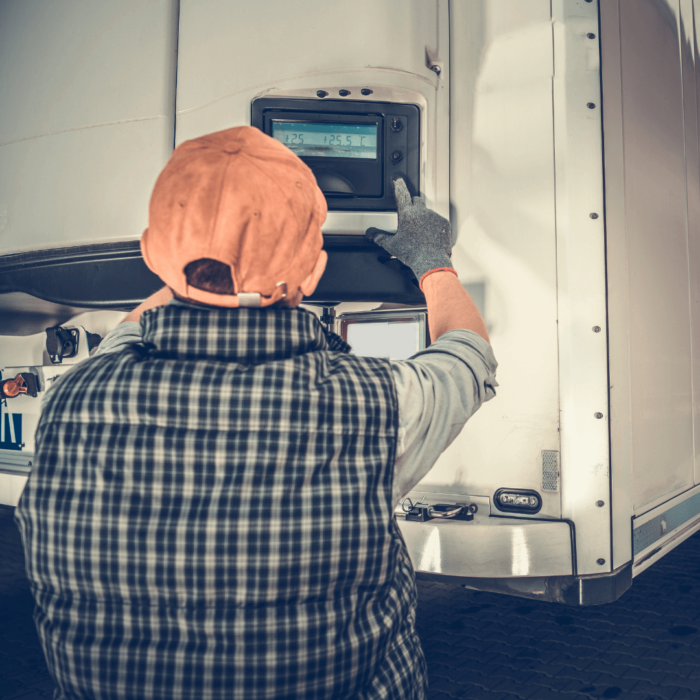9 mins
Maintenance Costs of Fleet Vehicle
The maintenance costs of fleet vehicles can be high and you need to be proactive in order to prepare for them. Learn about what contributes to the financial burden.

Speak to an Expert
Book a CallFleet vehicles are essential for many businesses and organizations. Still, they also come with significant challenges, which can be costly if the proper precautions aren’t taken. If the life cycle of a fleet vehicle is to remain long, it will inevitably require regular inspections, diagnostics, and repairs. Sadly, these kinds of essential expenses add up quickly and impact the bottom line of your business rather significantly.
These costs are neither intuitive nor easy to measure. The downtime of commercial vehicles, as well as driver safety, customer satisfaction, and environmental compliance, are all incredibly difficult to gauge without the right software. In this article, we will explore some of the hidden costs of maintenance and how to manage them effectively.
How Much Does It Cost To Maintain A Fleet?
Fleet maintenance costs typically include both fixed and variable fees that depend on numerous factors such as vehicle age, usage, fuel efficiency, emissions, repair frequency, and parts availability (which is perhaps the most contingent element, given the many supply chain issues we have seen over the past few years). These operating costs rely on the fleet size, fleet industry, and even the location of the business.
Despite the unpredictable nature of these fees, there are a few ways to measure fleet maintenance costs. First and foremost, business owners ought to account for each vehicle’s total cost of ownership (TCO). TCO refers to the sum of all expenses related to owning and operating a vehicle over its lifetime, including capital expenditures, repairs, depreciation, administration, and licensing. While it can’t foresee the impact of, say, a global pandemic, TCO can nevertheless help fleet managers compare different vehicles and make informed decisions about purchasing, leasing, replacing, or disposing of vehicles. In other words, TCO can allow businesses to anticipate unforeseen costs.
Another way to measure fleet maintenance costs is by looking at each vehicle’s average marginal cost (AMC). AMC is the change in total cost divided by the change in output or activity level. For example, if a vehicle costs $10,000 to operate for 10,000 miles and $11,000 for 11,000 miles, then the AMC is $1,000/1,000 = $1 per mile. AMC can help fleet managers evaluate the efficiency and profitability of each vehicle and identify areas for improvement.[1]
The American Transportation Research Institute (ATRI) notes that maintenance and repair costs represent between 8% and 10% of a fleet’s average marginal cost, at least since 2012. In other words, for every $100 spent on operating a vehicle, $8 to $10 go to maintenance and repair. While this statistic may seem quite severe, the numbers begin to make more sense when we account for macroeconomic factors like rising labor rates and higher raw material costs.[2]
Fortunately, fleet managers are capable of reducing fleet maintenance costs through various strategies:
- Performing preventive maintenance regularly to avoid breakdowns and extend vehicle life.
- Using fleet management software to track expenses, monitor performance, and generate reports.
- Leveraging data analytics to optimize routes, schedules, and fuel consumption.
- Negotiating discounts and warranties with vendors and service providers.
- Training drivers on safe and efficient driving habits.
- Outsourcing non-core functions such as towing, washing, and detailing.
Fleet maintenance costs are a significant part of running a fleet-based business. By understanding how they are calculated and what factors affect them, fleet managers can take proactive steps to control them and improve their bottom line.
How Much Does Fleet Maintenance Cost Per Car?
Fleet maintenance cost per car is a crucial metric; it reflects the total amount of money used to keep vehicles in pristine condition and prevent superfluous breakdowns. Fleet maintenance cost per car can vary according to several factors, such as the age, type, usage, and size of the vehicles, as well as the quality and frequency of vehicle repairs. This number is highly dependent on the expected amount of wear and tear for specific industries, like construction or cross-country cargo delivery.
Another way to precisely calculate the cost of a fleet operation per car is to use the total cost of ownership (TCO) method. This involves adding up all the fixed and variable costs associated with owning and operating a vehicle over its lifetime, such as acquisition, depreciation, fuel, insurance, taxes, repairs, and maintenance.[3]
To reduce fleet maintenance costs per car, fleet managers can implement some best practices, such as:
- Performing regular preventive maintenance to avoid costly repairs and downtime.
- Choosing reliable and fuel-efficient vehicles that suit the fleet’s needs and budget.
- Negotiating better deals with dealerships, suppliers, and service providers.
- Tracking and analyzing maintenance data to identify trends and areas for improvement.
- Using fleet management software to automate and streamline maintenance processes and reporting.[4][5]
Fleet maintenance cost per car is an important indicator of fleet performance and profitability. By measuring and optimizing it, fleet managers can improve their fleet’s efficiency, safety, and customer satisfaction.
How to Track Fleet Vehicle Maintenance
One way to track fleet vehicle maintenance is by using Fleet Management Software (FMS), which includes a maintenance tracking feature. This type of software allows fleet managers to set up reminders for important maintenance tasks such as oil changes, tire rotations, and brake inspections. Fleet managers can also use FMS to track vehicle mileage, monitor driver performance, maintain parts inventories, measure fuel costs, and assess idling time.
Telematics technology is also useful in this regard. These devices can be installed in fleet vehicles to collect data on vehicle performance and usage, which can instantly be transmitted to a central system for analysis. Specific applications go so far as to allow you to set up real-time reminders that can be sent to users via email and text message every time a maintenance interval comes up.
To learn more about fleet management software, read this next.
How to Set Up a Vehicle Fleet Maintenance Program
To set up a vehicle fleet maintenance program, the first step is to assess your fleet’s needs. This means determining the types of vehicles in your fleet, their expected mileage, and the manufacturer’s guidelines for vehicle health checks and service intervals. You must also keep detailed records of each vehicle’s maintenance history.
Once you have assessed your fleet’s needs, it’s time to develop a maintenance plan. This plan should include a schedule for regular preventive maintenance tasks such as oil changes, tire rotations, and brake inspections. You can use FMS to set up essential reminders.
To implement a vehicle fleet maintenance program, you must assign a fleet manager or project manager to oversee the program. This person will ensure that all maintenance tasks are completed on schedule and that any necessary repairs are made promptly.
What Are The Disadvantages Of Fleet Vehicles?
One disadvantage of owning fleet vehicles is that it can be a hassle to bear all the costs associated with fleet maintenance. These costs can include regular preventive maintenance tasks such as oil changes, tire rotations, brake inspections, and unexpected repairs. Fleet managers must also keep detailed records of each vehicle’s maintenance history and ensure that all maintenance tasks are completed on schedule.
What Are The Hidden Costs Of Fleet Maintenance?
One hidden cost of fleet maintenance is reconditioning and all the transfer fees that arise when an employee leaves the company, leaving a car in need of a new driver. This can include cleaning and detailing the vehicle and any necessary repairs or maintenance tasks.
Another hidden cost of fleet maintenance is the fact that you’re paying for the depreciation of the vehicle. If you’re leasing the car, the fleet company gets to keep it at the end of the lease term. If you own the vehicle, you’re stuck with a significantly depreciated asset that may have lost much of its value.
Conclusion
Maintaining a fleet of vehicles can be a costly and complex task—but it doesn’t have to be that way. Companies must bear the costs of regular preventive maintenance tasks such as oil changes, tire rotations, brake inspections, and unexpected repairs. Additionally, companies must pay for the vehicle’s depreciation, whether they own or lease it.
Fortunately, companies can avoid these costs by implementing a FAVR reimbursement program. This program reimburses employees for the fixed and variable costs of operating their vehicles for business purposes. By implementing a FAVR program, companies can avoid the hassle and expense of owning and maintaining a fleet of vehicles. Instead, they can reimburse their employees for the business use of their personal cars, which can be a more cost-effective solution.
Overall, it’s important to consider the costs associated with maintaining a fleet of vehicles and explore alternative solutions, such as FAVR reimbursement programs, which allow their employees to use their vehicles for work purposes. Employers can avoid these costs by implementing a Fixed and Variable Rate (FAVR) reimbursement program. By considering the manifold options available, you can make informed decisions that will help you more efficiently and cost-effectively manage all of the complexities that come with business-oriented automotive travel.

Sources
[1] How to control fleet maintenance costs | FleetOwner
[2] Calculating the Total Cost of Ownership for Your Fleet
[3] Fleet Management Pricing: How Much Does It Cost? | Tech.co
[4] Fleet maintenance and repair costs continue to rise | Bulk Transporter
[5] Fleet Management Cost Analysis
*****
Disclaimer: nothing contained in this blog post is legal or accounting advice. Consult your lawyer or accountant and do not rely on the information contained herein for any business or personal financial or legal decision making. While we strive to be as reliable as possible, we are neither lawyers nor accountants. Cardata’s clients should not rely on information contained herein to make decisions regarding their programs. Nothing in this or any blog post supersedes any contractual or other legal language issued to customers, prospective or actual, by Cardata. While Cardata strives to be as accurate as possible in the presentation of material on the blog, no guarantees of the veracity of the above are made.
For several citations of IRS publications, on which we base our blog content ideas, please always consult this article: https://www.cardata.co/blog/irs-rules-for-mileage-reimbursements. For Cardata’s terms of service, go here: https://www.cardata.co/terms.
Share on:


